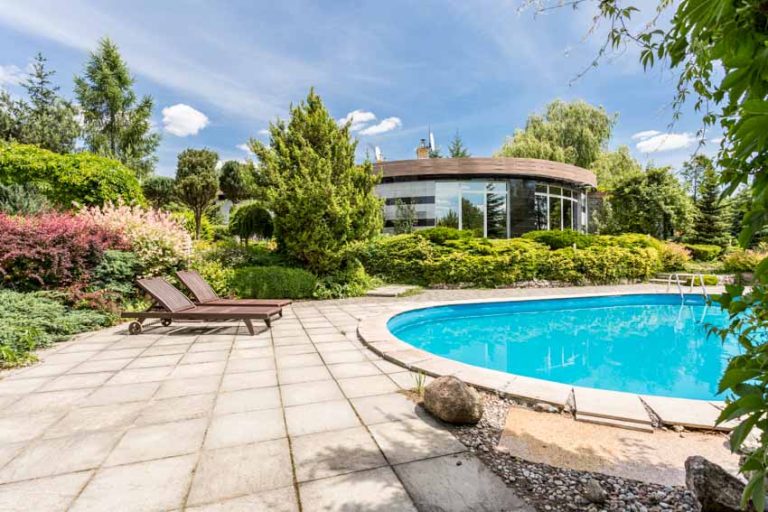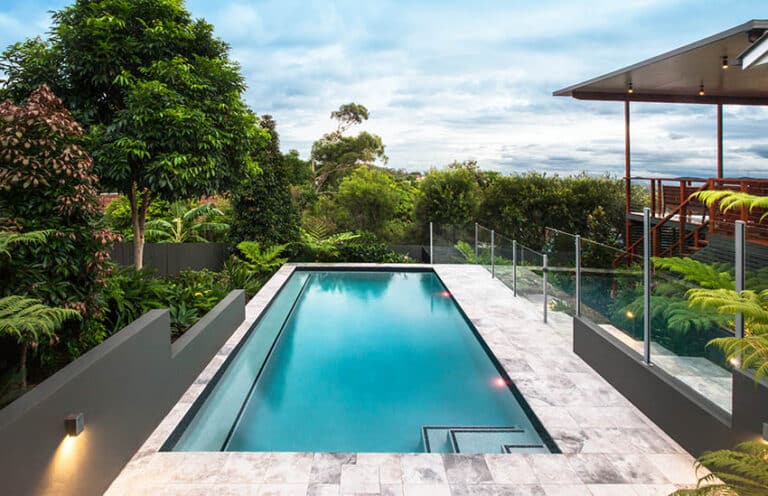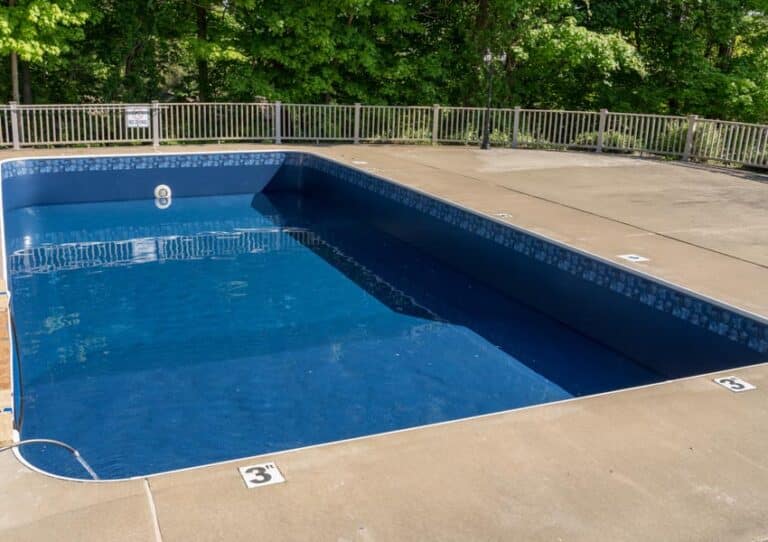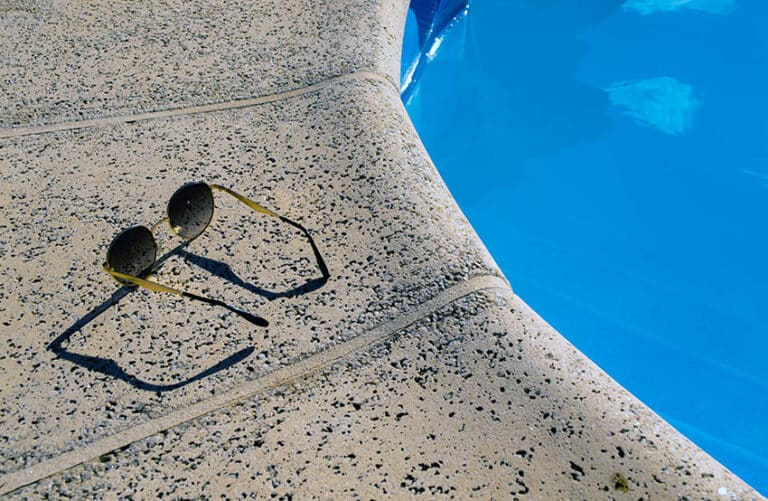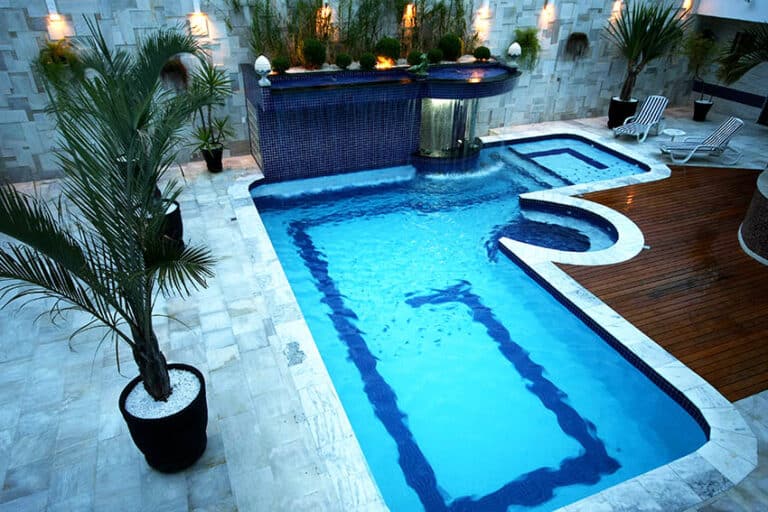Should You Consider A Pea Gravel Pool Deck?
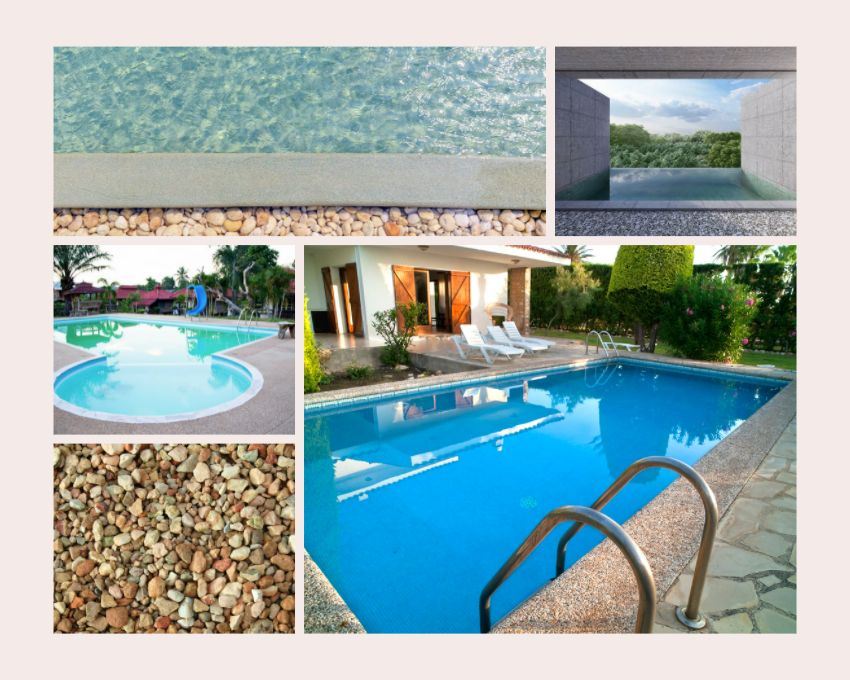
If there’s a material a new landscaper or an enterprising homeowner should look into, it would have to be pea gravel. This material is very versatile and cost efficient; it really stands out as one of the aggregates to use for home applications. Pea gravel can be used for a myriad of different landscaping options. Pea gravel can be an excellent material for walls, walkways, driveways, drainage, and swimming pool decks. That’s how versatile this material is. It has been nicknamed as the Mystique of outdoor landscaping because it can pretty much be turned into anything.
What Is A Pea Gravel Pool Deck
A pea gravel pool deck is made up of many small round stones that are about 3/8 of an inch in size. During installation a 3 inch layer of pea gravel is placed on top of larger coarse crushed rock. Pea gravel is a great material used as backfill or decking for pools. The main reason behind it is that it has a permeability factor and encourages healthy drainage in the areas where it is installed or applied. It’s also very nice on the eyes.
If you’re looking for a budget-friendly pool deck option that would make the pool look great; pea gravel should most definitely be at the very top of that list. [Source: dnr.wi.gov General Permit Application Instructions]
Pros And Cons Of Gravel Around The Pool
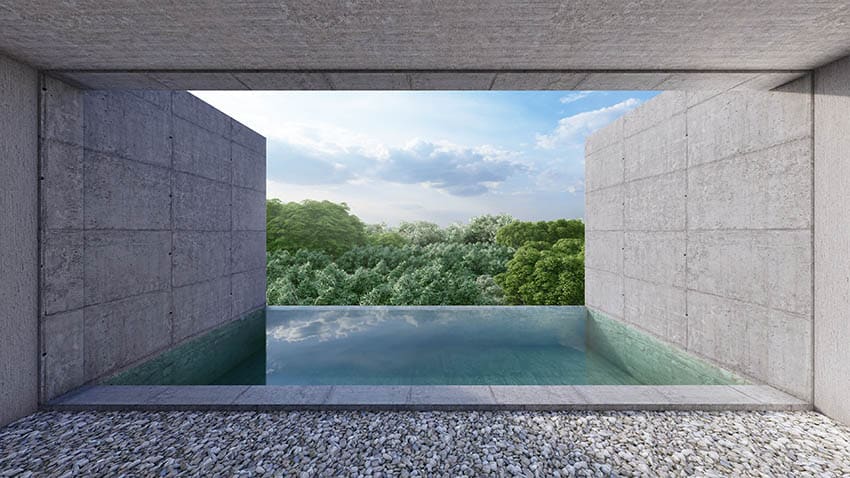
Pros:
Excellent drainage – An obvious pro for pea gravel being used around the pool is for its aesthetic and drainage purposes.
Inexpensive pool deck material – Gone are the days of skyrocketing prices because in this day and age, you can order literally anything and everything off of the internet and prices can turn out to be quite competitive. Although to be honest, a homeowner or pool decker’s hands may be a little tied in terms of purchases in such a way wherein convenience still lies on buying it locally.
Easy to buy locally – Stone can turn out to be quite heavy and a lot will be needed for as far as pool decking is concerned.
The best way to source this out would be to look up local stores in the area. If you buy in bulk, most of them would even offer free delivery. As with all commodities, price rates can also be quite friendly if bought out in bulk.
Easy to walk on – Another upside is that its edges are rounded and smooth. It is much larger than regular aggregate and is much easier to walk on.
It highly minimizes the possibility of discomfort when pool bathers walk around in bare feet; which is more or less oftentimes the case and this is why pool decking should be critically selected and planned.
Prevents weeds from growing – It prevents weed growth as the recommended inlay is roughly 4 inches or more above the ground. No weed will end up growing in between. It means that its mess is free and has little to no maintenance.
Low maintenance – More than that, if it does rain or get wet; it doesn’t become muddy or messy compared to the rest of the other types of gravel and varieties out in the market.
Cons:
It can be kicked into the pool – A major con for this pool decking though, is erosion. It tends to get carried around to other areas or parts of the outdoor space if not installed correctly.
Luckily, this is something that can be easily remedied with a little bit of edging; the preferred material for such would be concrete or a mixture of other fine-grained aggregates.
Can be hard to remove – It is also not for the fickle-hearted. In the event that decisions and preferences change and there is a want to change the material for the pool deck into something else completely, this can turn out to be a bit labor-intensive.
An awful lot of trouble would have to get into shifting the gravel, moving it around, or getting it removed and changed out completely so it would be wise to keep this in mind when making up decisions.
Weeds – A common problem with loose stones is that even with the addition of laying down landscape fabric they can still grow weeds. These will need to be pulled to keep the area looking nice and kept.
Chairs Sink and Wobble – An unfortunate effect of using aggregate is that lounge and outdoor chairs don’t always sit properly. This can be a nuisance requiring extra effort to properly sit without the furniture wobbling. Adding pavers can create areas better suited for sitting.
How To Repair A Gravel Aggregate Patio
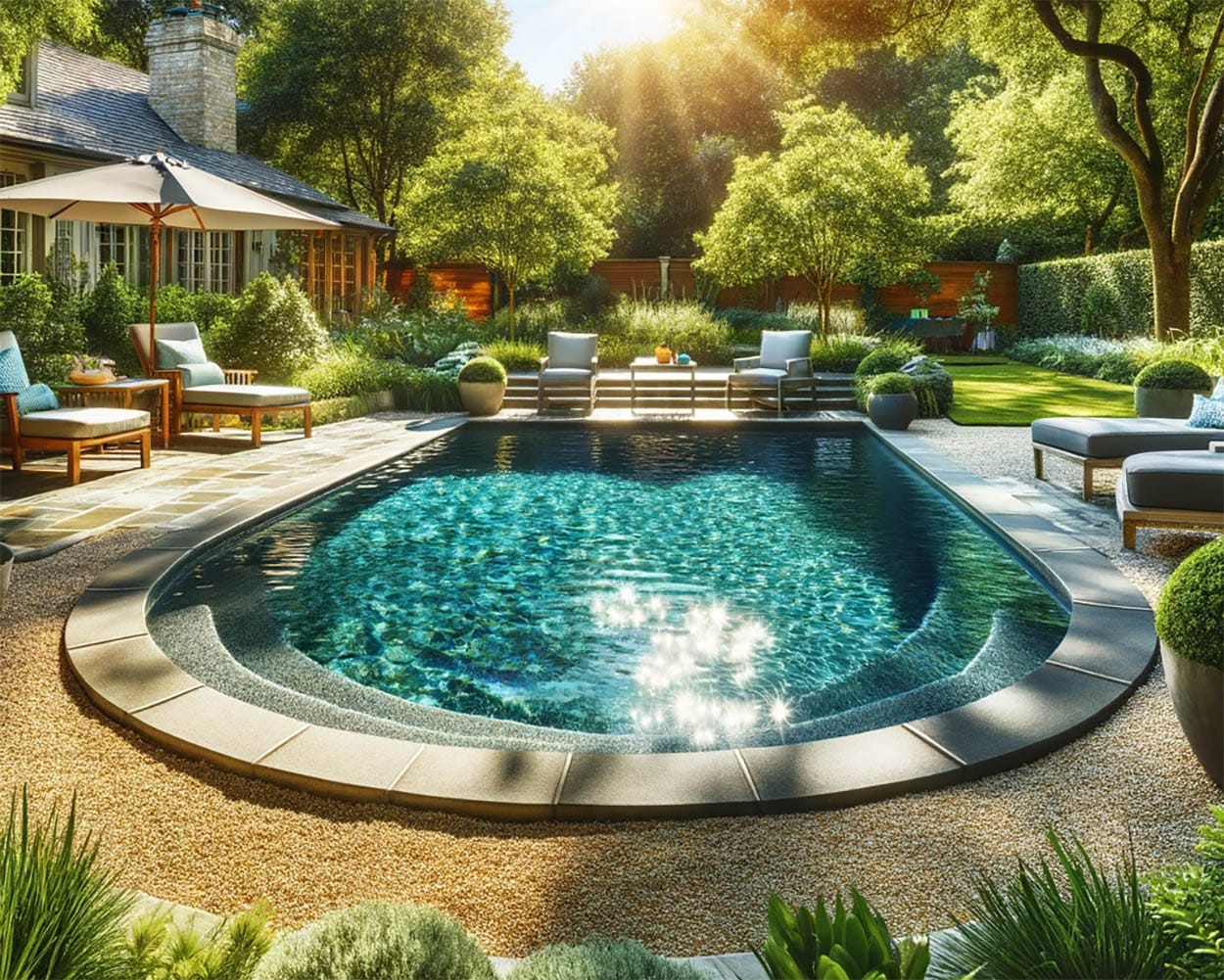
A downside to a pea gravel aggregate patio is that it tends to sink into the soil over time. With years of wear and tear, it tends to look cracked and faded. A common way to repair this would have to be a process called resurfacing. Although the concept is pretty simple and direct, the recommendation would still be to ensure that professional help is hired.
If you want to fix this as a DIY project here are some tips:
- Access the damaged areas including depressions or uneven sections
- Purchase matching aggregate materials to make repairs including a rake, tamper, shovel, and gloves
- (Apply landscape fabric if needed) Rake and flatten the high spots
- Evenly fill in the low spots with new stones and tamper
- Make sure the surface is level
Can You Resurface A Gravel Patio
For the basis of mechanics though, repairing a pea gravel patio would involve running over the entire surface first with a push broom. This is to remove dirt and excess materials that might not originally be part of the patio.
The next step would be to wipe the entire surface down, preferably with a damp rag with a specified mineral spirit or solvent cleaner. The following step requires a bit of alchemy. Two parts of sand need to be mixed in with 3 parts of pea gravel and then 1.5 parts of cement. The consistency should be similar to that of peanut butter.
Once the mixture is ready, the next step is to apply a cement or cement paste layer over the surface area. These materials usually come with applicators so it shouldn’t be too hard. This is to ensure the resurfacing mixture stays in place and that gaps in the old paving will be filled. And lastly, would be to spread out the resurfacing material. The curing period would vary but the general consensus is that it should sit undisturbed for at least a minimum of 48 hours or so. It’s also important to factor in the outdoor elements such as rain or high heat and so on.
What is a Gravel Aggregate Landscape
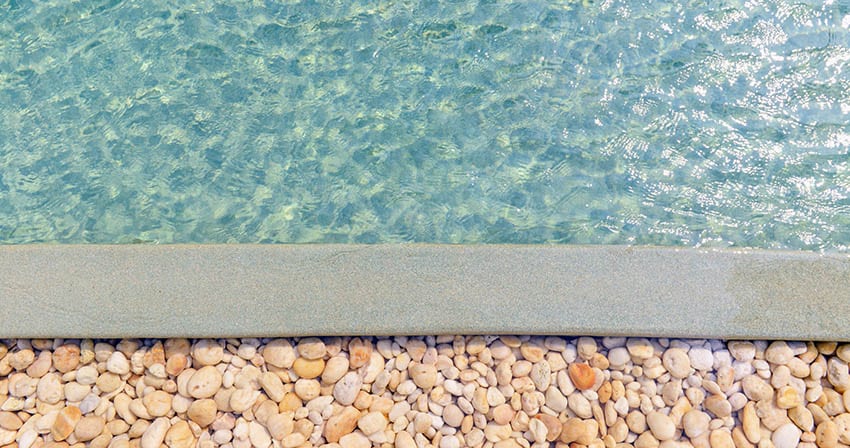
A pea gravel aggregate pool deck is also known as an exposed aggregate pool deck. It can be made up of granite, quartz, or other types of natural stones mixed with concrete to create a stylish design.
During the installation process when the concrete and pea gravel are drying, rock salt is dumped onto the surface and troweled away. Then the entire surface of the pool deck is washed down. The result is an exposed aggregate surface that offers visual interest and is cooler on the feet than bare concrete.
The unique concrete treatment is particularly effective for pools with undulating edges; it adds to the organic feel. -Better Homes and gardens, Pool & Spa Planner
For more related information check out our gallery of the popular types of pool finishes here.

